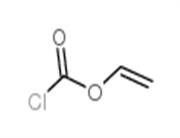Product Name: Flecainide
Synonyms: N-(2-Piperidinylmethyl)-2,5-bis(2,2,2-trifluoroethoxy)benzamide;FLECAINTDE BASE;Benzamide, N-(2-piperidinylmethyl)-2,5-bis(2,2,2-trifluoroethoxy)-;Flecaine;rac Flecainide;Flecainide-d4;N-(Piperidin-2-ylMethyl)-2,5-bis(2,2,2-trifluoroethoxy)benzaMide;(±)-Flecainide solution
CAS: 54143-55-4
MF: C17H20F6N2O3
MW: 414.34
EINECS: 685-650-9
Product Categories: Intermediates & Fine Chemicals;Pharmaceuticals;Aromatics;Heterocycles
Mol File: 54143-55-4.mol
Flecainide Structure
Flecainide Chemical Properties
Melting point 105-1070C
Boiling point 434.9±45.0 °C(Predicted)
density 1.286±0.06 g/cm3(Predicted)
Fp 9℃
storage temp. Refrigerator
pka pKa 9.3 (Uncertain)
CAS DataBase Reference 54143-55-4(CAS DataBase Reference)
NIST Chemistry Reference Benzamide, n-(2-piperidinylmethyl)-2,5-bis(2,2,2-trifluoroethoxy)-(54143-55-4)
Safety Information
Hazard Codes F,T
Risk Statements 11-23/24/25-39/23/24/25
Safety Statements 7-16-36/37-45
RIDADR 3249
WGK Germany 1
HazardClass 6.1(b)
PackingGroup III
MSDS Information
Flecainide Usage And Synthesis
Chemical Properties White Crystalline Powder
Uses Antiarrhythmic (class IC)
Definition ChEBI: A monocarboxylic acid amide obtained by formal condensation of the carboxy group of 2,5-bis(2,2,2-trifluoroethoxy)benzoic acid with the primary amino group of piperidin-2-ylmethylamine. An antiarrhythmic agent used (in the form of its acetate salt) to prev nt and treat tachyarrhythmia (abnormal fast rhythm of the heart).
Brand name Tambocor (3M Pharmaceuticals).
World Health Organization (WHO) The membrane-stabilizing antiarrhythmic agent flecainide was introduced into medicine in 1982. The decision to delete the indications for patients with asymptomatic and less severe symptomatic ventricular arrhythmias was taken on the basis of the results of a trial (CAST study) that showed a two-fold increase in deaths in post-myocardiac patients taking flecainide compared with the placebo group.
Hazard Human systemic effects.
Clinical Use Flecainide (Tambocor) is a fluorinated aromatic hydrocarbon examined initially for its local anesthetic action and subsequently found to have antiarrhythmic effects. Flecainide inhibits the sodium channel, leading to conduction slowing in all parts of the heart, but most notably in the His-Purkinje system and ventricular myocardium. It has relatively minor effects on repolarization. Flecainide also inhibits abnormal automaticity.
Flecainide is effective in treating most types of atrial arrhythmias. It is also used for life-threatening ventricular arrhythmias. However, flecainide should be used with extreme caution in any patient with structural heart disease. Flecainide crosses the placenta, with fetal levels reaching approximately 70% of maternal levels. In many centers, it is the second-line drug after digoxin for therapy of fetal arrhythmias. Because of the high incidence of proarrhythmia, initiation of therapy or significant increases in dosing should be performed only on inpatients.
Side effects Most adverse effects occur within a few days of initial drug administration. The most frequently reported effects are dizziness, light-headedness, faintness, unsteadiness, visual disturbances, blurred vision (e.g., spots before the eyes, difficulty in focusing), nausea, headache, and dyspnea.
Worsening of heart failure and prolongation of the PR and QRS intervals are likely to occur with flecainide, and an increased risk of proarrhythmia has been reported.
Drug interactions In patients whose condition has been stabilized by flecainide, the addition of cimetidine may reduce the rate of flecainide’s hepatic metabolism, increasing the potential for toxicity. Flecainide may increase digoxin concentrations on concurrent administration.
Precautions Flecainide is contraindicated in patients with preexisting second- or third-degree heart block or with bundle branch block unless a pacemaker is present to maintain ventricular rhythm. It should not be used in patients with cardiogenic shock.

 China
China






